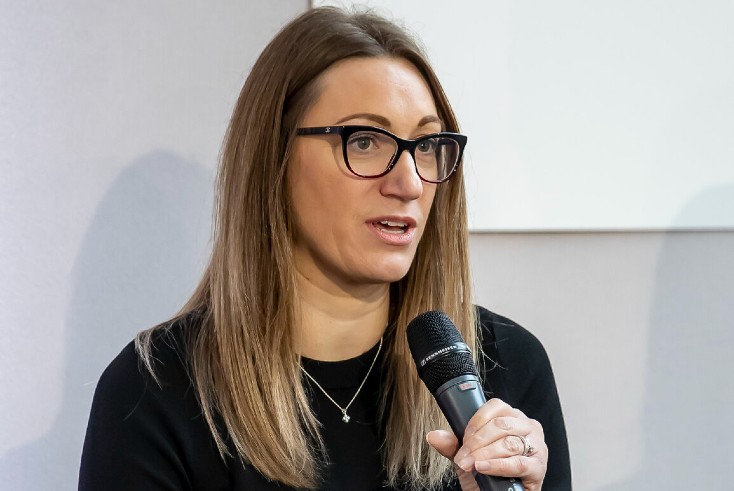How Reach’s social brand Curiously is targeting new audiences

The Media Leader Interview
Reach audience and content director Anna Jeys speaks about the challenges in building audiences across social platforms, and the need to reach younger audiences on their own terms.
Traditional publishers are in a bind. As media has become fragmented, younger audiences in particularly have become increasingly difficult to reach. Rather than read newspapers or magazines (be they digital or physical), teens and 20somethings are more likely to spend time browsing the endless stream of content on social platforms like TikTok and Instagram.
But young audiences are highly valuable. Though they may lack immediate purchasing power as compared to their older peers, the 18-35 age bracket is key to developing trust and brand loyalty, both for advertisers and publishers alike.
A number of media investors have taken to push for the creation of new, social-first news and content brands. The News Movement, for example, launched last December under the editorial helm of ex-BBC News editorial director Kamal Ahmed.
Ben Jeffries, CEO and co-founder of influencer marketing company Influencer, says such developments make good business sense. He tells The Media Leader: “18 years after YouTube was first created, and with TikTok setting the cultural agenda and influencing the way a whole generation of people consume news and entertainment, it’s no surprise that publishers are now looking to adopt a similar look and feel to creator content in an to attempt to get more on the radar of hard-to-reach Gen Z eyeballs”.
Reach, the UK’s largest publisher, has made it a priority over the past year to seek to increase its appeal with younger readers. By reaching 18-35s where they spend most of their digital time—be it on YouTube, Snapchat, TikTok or others —the publisher reasons it can boost its business in the long term, even amid a decline in overall revenues this year.
Enter Curiously, Reach’s new social content brand. Launched last September with the tagline “Mind wide open. Born social”, Curiously is part of a wider project by Reach to seek younger audiences and test and learn what content is best received across different social platforms.
‘Social’ is not all one thing
The brand has thus far accumulated 111,200 followers on TikTok, 13,300 followers on Twitter, 5,200 followers on Snapchat, and 1,244 followers on Instagram. It also has presences on Facebook and YouTube, and is considering launching on WhatsApp as well.
For Anna Jeys, Reach’s audience and content director for new audiences, Curiously has been a project of iteration.
“One of the challenges from the very beginning has been learning what the different audiences on different platforms want from us, and not just delivering one content strategy that goes across all different social media platforms,” she told The Media Leader. “We’ll often pitch a story at our meeting in the morning and think about how we can tell that story, but it’s not until the content comes in that we realise that we haven’t got the right amount of context for that story in that format, and we need to think about how else we tell it.”

“Social” is not all one thing, says Jeys (pictured, above). Nor is the 18-35 age bracket, which includes everyone from TikTok-savvy Gen Z’s to traditional Facebook and Instagram mainstays in millennials. What audiences are receptive to in one format may be vastly different to what audiences are receptive to in a different format. TikTok, for example, is widely considered a platform for humour, which makes certain types of content, such as news, difficult to communicate in more traditional ways.
As such, though Curiously is not averse to doing news or sports news, it has generally followed audience demands to lean more heavily into entertainment and celebrity news and advice on dating and relationships. And Jeys is certainly concerned with “keeping ourselves agile” amid broader questions of the reliability of social platforms like Facebook, TikTok, and Twitter to maintain consistent content policies.
Conscious to avoid the likes of BuzzFeed News and Vice Media, which faltered in part due to an overreliance on social media for driving traffic, the young brand is considering additional options such as developing a website. As a social brand, Curiously’s content has thus far almost entirely been comprised of short- and long-form video and images.
“There’s still a place for text,” admits Jeys. “But the important thing is choosing the right way to tell a story first; choose the right format for the story rather than do everything one way or another.”
Bootstrapping a ‘TV production’ team
The agile, image-and-video-first way in which social content brands work has created a unique set of challenges for hiring and training. Curiously’s team is made up of a variety of content creators and content editors aged 19-35, including a mix of people that have worked in newsrooms and with social brands.
Jeys commented that “training is really important to us”, especially given that many staffers with more traditional journalistic experience may be unused to creating and editing exclusively content made for social media; meanwhile content creators may not have as sharp an editorial eye as trained journalists. The group hosts fortnightly workshops to help develop the various skills needed to succeed within the team, though there is a general openness to working with existing independent content creators as well, assuming their brands and audiences align.
“We are not always going to have the best authority on a subject; we should be partnering to make sure we have the best authority to be able to tell a story well,” she admitted.

Jeys’ description of her nimble, young team is akin to bootstrapping a traditional broadcast production staff; journalists need to research and script content, but content creators that are better at the theatre of presenting such content across different platforms then have a great deal of input.
Curiously lacks a central office and is instead spread across the country. Jeys says that though the decentralised nature can make communication more difficult than if everyone was all in one place, it enables them to find representative and oft-overlooked viewpoints or stories from around Britain.
Value in social content brands?
While the ultimate goal of Curiously, like with any brand, is to create revenue, Jeys’ primary concern at the moment is to simply build up its audience and become “a brand people want to turn to”. The team at Reach is making a familiar bet: that revenue tends to follow scale.
“We’re not just publishing content, we’re building a brand,” adds Jeys.
Routes to revenue could include affiliates and brand partnerships, though Jeys did not mention specific deals Reach may be seeking for Curiously. Though it is still an embryonic business model, The Barber Shop agency founder Dino Myers-Lamptey tells The Media Leader that social content brands could be a boon to publishers by “making things more digestible for consumers and, where possible, creating safer spaces for brands to communicate.”
“What the BBC can’t do for UK advertisers, Reach can, so it’s a smart move that many would say is the only way forward if your aim is to connect with the new generation,” he adds. However, Myers-Lamptey cautions that advertising opportunities around this kind of content have struggled to fit in seamlessly with traditional publisher business models to this point.
Jeffries also sees the potential crossover appeal between social content and influencer marketing, telling The Media Leader that getting content creators to present news and factual information in “a more modern way” is encouraging. “We really like the look and feel of it,” he adds.
But Reach’s social content project as a whole is not just about Curiously itself. It is also about how the Curiously team can help develop strategy to be used at other Reach properties. Brands such as the Manchester Evening News, Birmingham Live, Bristol Live, and Liverpool Echo seek to benefit from Curiously’s sandbox approach to improving social followings.
Says Jeys: “The advantage of Curiously is that we are one part of a larger organisation. We are able to experiment and have the opportunity to learn while we’re publishing and spread that around the rest of the business.”



